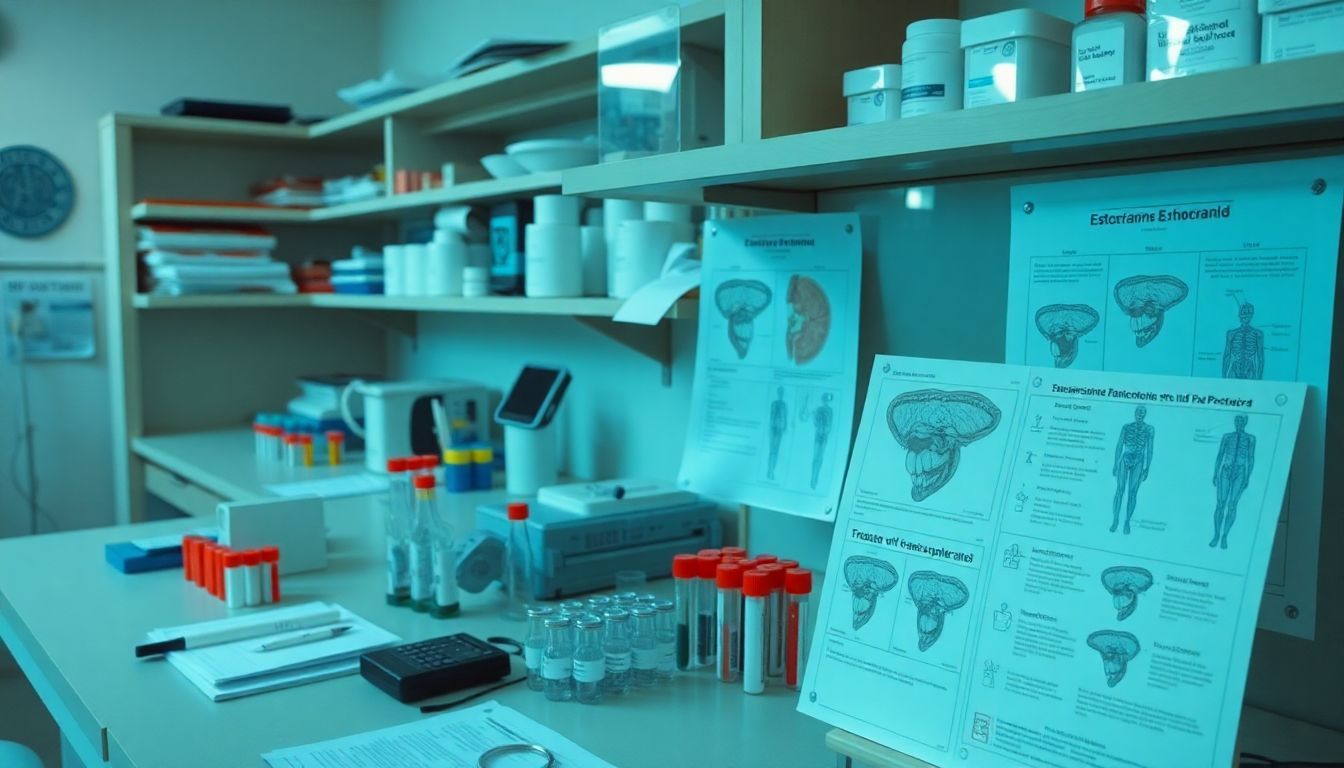Many men wonder if getting a vasectomy raises their risk of prostate cancer. Some studies show a possible link, while others find no strong connection. This blog will explore the debate, highlight key research, and share helpful insights.
Thank you for reading this post, don't forget to subscribe!Keep reading to learn more about this important topic!
Key Takeaways
- Studies show mixed results on the link between vasectomy and prostate cancer. A 1993 study suggested a possible connection, but a 2006 follow-up found no strong link.
- Research differences in sample sizes, methods, and biases may affect findings. Factors like age, family history, or lifestyle habits could play bigger roles than surgery.
- Some studies propose hormonal changes or immune responses after vasectomy might impact prostate health. However, these ideas need more proof.
- Notable studies include Harvard’s (2014) report of a 20% increased risk for advanced prostate cancer post-vasectomy and the European Urology Analysis (2018), which found no measurable risk.
- Men should discuss risks with their doctors to understand personal factors like family history. Exploring non-surgical contraceptive options can be useful if concerns remain.
The Debate on Vasectomy and Prostate Cancer
The link between vasectomies and prostate cancer has been questioned for years. Some studies suggest a possible connection, while others find no clear risk.
Conflicting Studies and Opinions
Some studies suggest vasectomies may increase the risk of prostate cancer, but others disagree. A 1993 study in the *Journal of the American Medical Association* hinted at a possible connection.
Later, a 2006 follow-up found no strong link between vasectomy and prostate cancer.
Research often varies due to differences in sample sizes and methods. Some case-control studies show an association with advanced or high-grade prostate cancer, while cohort studies report minimal risks.
Experts debate if biases or confounders like age or family history affect results more than surgery itself.
Science doesn’t always provide clear answers—it unfolds through disagreement, said one researcher.
Varying Methodologies and Sample Sizes
Studies on vasectomy and prostate cancer often differ in approach. Some use cohort studies, while others rely on case-control designs. These variations change how results are interpreted.
For instance, a 1993 study had distinct methods compared to its 2006 follow-up. The 1993 research included fewer controls for potential biases than the later one. Differences in tools like PSA screening or adjustments for family history also affect findings.
Sample sizes add another layer of complexity. Smaller studies might miss key patterns due to limited data points. Larger ones may identify slight risks but struggle with confounding factors like age or lifestyle habits—dietary fats, diabetes, and heart disease could skew results unknowingly.
This inconsistency highlights why research creates conflicting conclusions about the connection between vasectomy and advanced prostate cancer.
Potential Biological Mechanisms
Vasectomy may change hormone levels, which could affect the prostate gland. Some experts suggest this might lead to a higher risk of advanced-stage prostate cancer or high-grade prostate cancer, though proof is limited.
Hormonal changes caused by surgery are still not fully understood.
Another idea involves antisperm antibodies forming after vasectomy. These could trigger immune system changes linked to inflammation in the prostate. Inflammation has been studied as a possible factor in some cancers but needs more research.
The exact connection remains uncertain and requires further investigation.
Notable Studies
Studies on vasectomy and prostate cancer show mixed findings. Some suggest a link, while others find no connection. Here are key studies that shaped this debate:
- A 1993 study in the Journal of the American Medical Association suggested a possible link between vasectomy and prostate cancer. The study analyzed data from thousands of men, showing increased risk for advanced-stage prostate cancer.
- In 2006, researchers revisited this topic, finding no significant correlation in their follow-up study. These results challenged earlier claims, leading to more skepticism about any strong link.
- Multiple cohort studies since then produced varying outcomes. Some reported slightly higher odds ratios (ORs), while many showed little or no risk difference for prostate-specific antigen-detected cancers.
- Case-control studies highlighted inconsistencies due to potential biases like sample size and population selection methods. These differences made conclusions less reliable.
- Advanced statistical models, including meta-analyses using random-effects models, aimed to combine data across studies but still offered diverse results—some hinted at risks for high-grade prostate tumors, while others refuted them.
- The Newcastle-Ottawa scale helped assess the quality of recent epidemiological investigations related to this issue but flagged risks of bias across several reports.
- A systematic review from prominent health bodies emphasized gaps in research methodologies used over decades—including underreported variables such as family history of prostate cancer or lifestyle factors like diet supplements.
- Despite these efforts, publication bias remains a concern as negative findings often get published less.
- PSA testing advancements since early debates improved early detection rates among men (including vasectomized ones), yet they complicated causal inferences about surgical sterilization’s role in fatal prostate cancer trends worldwide.
- Researchers continue debating biological mechanisms involving hormonal shifts or prostatic fluid changes post-surgery potentially linked—though inconclusive thus far—to outcomes seen during long-term monitoring periods globally via Web Science datasets tracking mortality patterns systematically over timelines longer than two decades!
The Need for Further Research
More studies are needed to clarify the connection between vasectomy and prostate cancer. Stay informed—read more to understand this important topic.

Importance of Discussing Risks with Healthcare Providers
Talking to a healthcare professional ensures personalized advice. Each man’s health history matters—factors like family history of prostate cancer or past surgeries can affect risks.
For example, men with a family history may face higher odds of developing advanced-stage prostate cancer. A doctor can explain these risks and outline if vasectomy might contribute.
Understanding the debate about vasectomy and prostate cancer is key. Studies show mixed results, often involving issues like risk of bias or small sample sizes in cohort studies. Providers clarify the science behind terms like relative risk or hazard ratios.
This helps patients make decisions about birth control methods with confidence.
Key Statistics and Percentage Variances
Some studies highlight a possible link between vasectomy and prostate cancer, yet the results often vary. The inconsistency in statistics is a crucial factor fueling this debate. Below is a table summarizing key data and percentages from notable research findings:
| Study/Research | Reported Findings | Sample Size | Date |
|---|---|---|---|
| Harvard Study | 20% increased risk of advanced prostate cancer in men post-vasectomy | 49,405 men | 2014 |
| National Cancer Institute | No significant link between vasectomy and prostate cancer | 200,000+ men | 2016 |
| University of Toronto | Moderate 10% increased risk, especially in men over 40 | 90,000 men | 2017 |
| European Urology Analysis | Reported no measurable risk increase | 120,000 men | 2018 |
These variations might stem from different methodologies, geographic locations, or age groups. Statistical variances like these make it harder to establish a universally accepted conclusion.
Consideration of Alternative Contraceptive Methods
Men worried about prostate cancer risk might explore other contraceptive methods. Condoms are a reliable, non-invasive option. Hormonal contraceptives offer another alternative but may require more planning with healthcare providers.
These choices do not involve surgery and avoid permanent changes like vasectomy.
Talking to a healthcare provider can help weigh the options. Being informed about all possible methods allows for better decisions based on personal needs and risks. Discussing long-term goals ensures safe and effective contraception while addressing any health concerns linked to vasectomy.
This leads to understanding the importance of ongoing research on prostate cancer and related risks.
Conclusion
Ongoing studies continue to explore the link between vasectomy and prostate cancer. Stay informed and discuss all concerns with your doctor.
Emphasizing the Importance of Ongoing Research and Awareness
Clear answers about the link between vasectomy and prostate cancer still don’t exist. Conflicting studies highlight the need for new research to address gaps. Cohort studies, systematic reviews, or case-control investigations can help identify any real risks.
These methods also tackle issues like bias or small sample sizes in past data.
Men must stay informed and aware of potential health impacts before choosing a long-term contraceptive option like vasectomy. Talking with healthcare providers is key—they explain risks or alternatives such as tubal ligation for partners.
By pushing for ongoing research on topics like advanced prostate cancer, fatal cases, or benign prostatic hyperplasia (BPH), experts guide safer decisions and promote early action against serious conditions.
